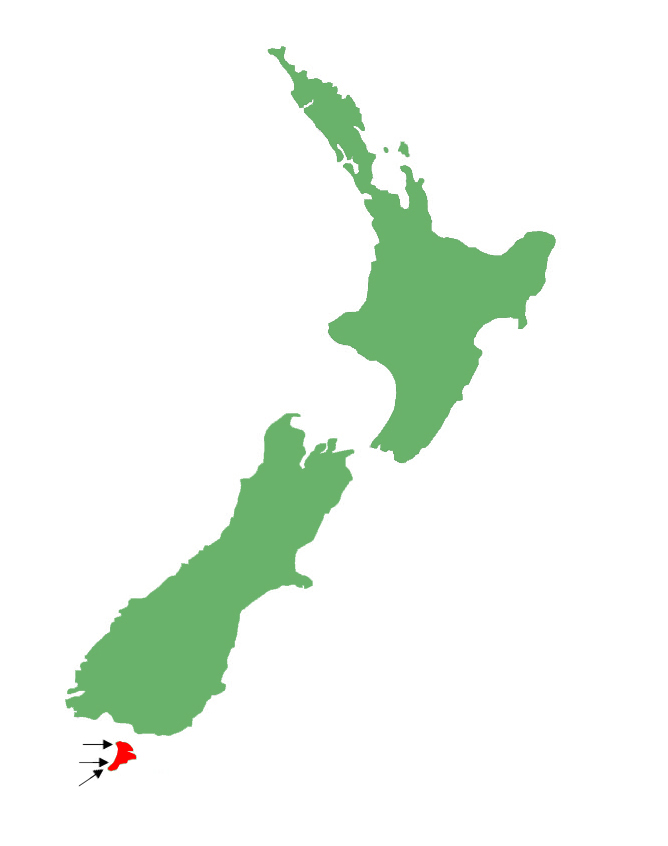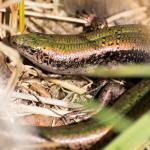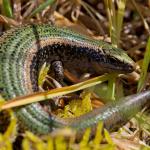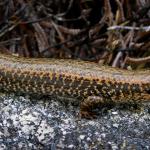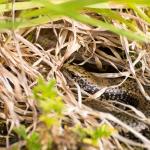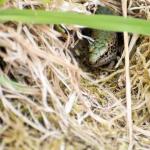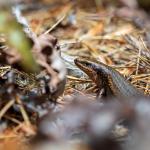- Home
- Herpetofauna Index
- Native
- Oligosoma Aff. Chloronoton "Stewart Island"
Oligosoma aff. chloronoton "Stewart Island"
Stewart Island green skink
Oligosoma aff. chloronoton "Stewart Island"
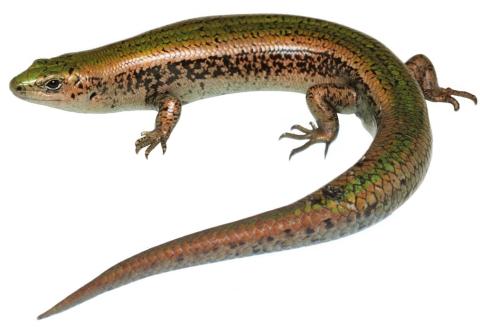
Length: SVL up to 125mm, with the tail being equal to or longer than the body
Weight: unknown
Description
A stunning green skink found on Stewart Island and its outlying islands. It is by far the largest species of skink occurring in this region.
Their colouration can range from brown to olive green, and they may have crescent-shaped ocelli (eye-like markings) running along the body onto the tail. It is more common for ocelli to be absent, and for these to be replaced by crescent-shaped black flecking. Individuals in dune systems tend to be weakly patterned, whilst animals in wetlands tend to be much more heavily flecked. The lateral surfaces of this species are often heavily flecked with black, gold and white/cream markings, fading to grey on the underside. The stomach is often grey and can have varying amounts of black flecking.
Not likely to be confused with any of the co-occurring species due to its significantly larger size, and bright green colouration. Closely related to the Southland green skink (Oligosoma chloronoton), but can be distinguished by its much more robust build, and its tendency to lack clear ocelli
Life Expectancy
Unknown.
Distribution
Confined to Stewart Island and its outlying islands (Codfish Island / Whenuahou, etc.). It is becoming exceedingly rare on Stewart, but is still common on the pest free offshore islands such as Codfish / Whenuahou.
Ecology and Habitat
A diurnal species, which occurs in a variety of habitats including dune systems, wetlands, and forest margins.
Social Structure
Solitary.
Breeding Biology
Viviparous. Little is known about its breeding biology, but likely to be similar to the closely related green skink / Southland green skink (Oligosoma chloronoton) e.g. 1-4 young born in late summer.
Diet
As with most of our native skinks, this species is omnivorous feeding on both invertebrates (spiders, insects and amphipods), and the small fruits of native plants.
Disease
Unknown.
Conservation strategy
Stewart Island green skinks are regarded as 'Threatened - Nationally Vulnerable'. This species is declining on the main Stewart Island due to its large size, and therefore higher susceptibility to predation from the suite of mammalian predators (rats, possums, and feral cats).
Interesting notes
Stewart Island green skinks are members of the green skink species complex. 'Green skinks' are a group of four closely-related species which are difficult to distinguish morphologically (based on appearance) and were originally regarded as one variable and widely distributed species - Oligosoma chloronoton (of which the green skink / Southland green skink will retain the scientific name). Green skinks are regionally distributed from the Otago region through to Stewart Island. Other species include the green skink / Southland green skink (Oligosoma chloronoton), Lakes skink (Oligosoma aff. chloronoton "West Otago") and Otago green skink (Oligosoma aff. chloronoton "Eastern Otago").
References
Jewell, T. (2008). A photographic guide to reptiles and amphibians of New Zealand. Auckland: New Holland.
van Winkel, D., Baling, M., & Hitchmough, R. (2018). Reptiles and Amphibians of New Zealand: A Field Guide. Auckland University Press, pp376.
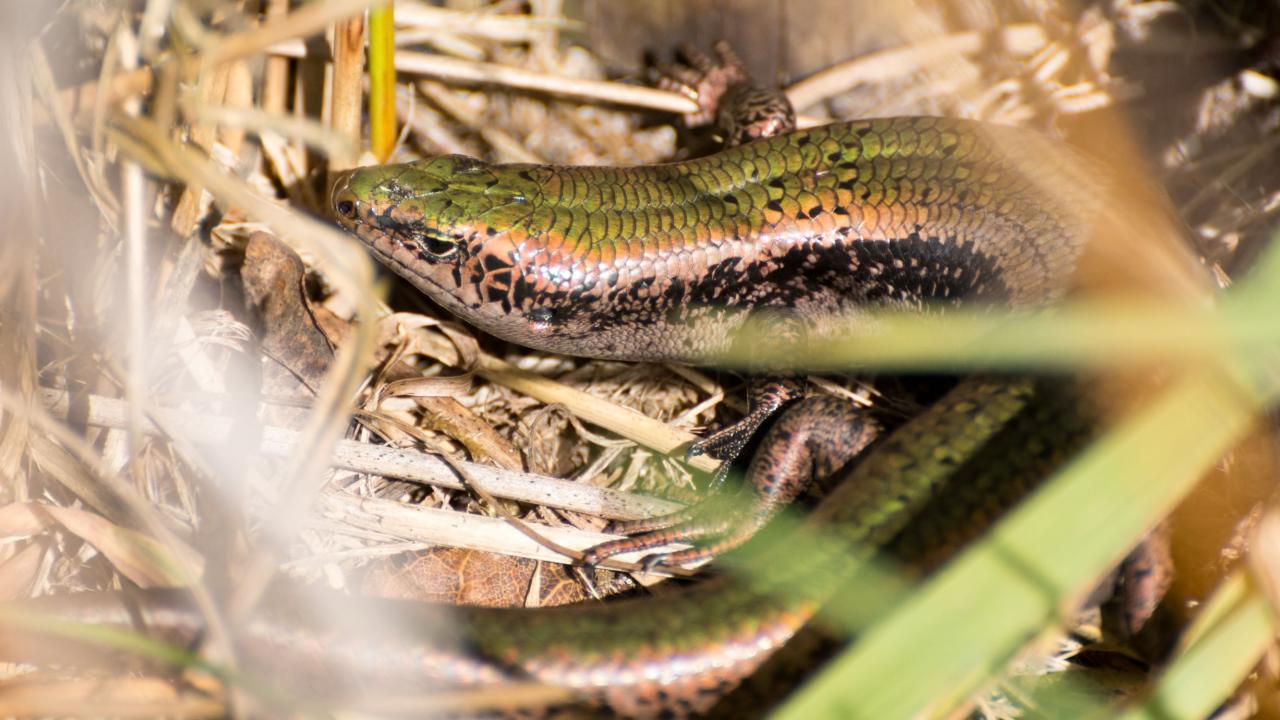
Stewart Island green skink (Whenua Hou/Codfish Island, Stewart Island). © Jake Osborne
